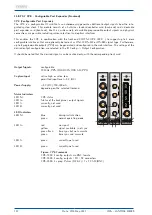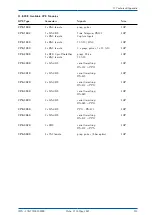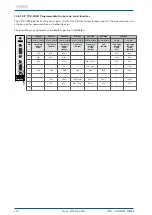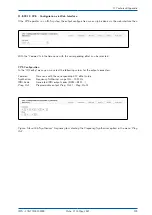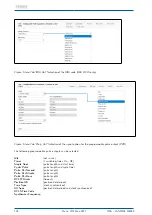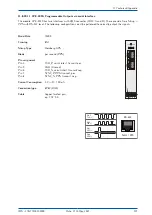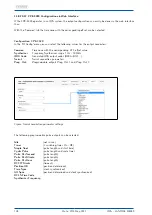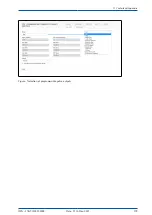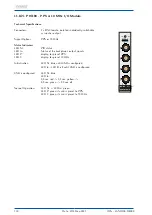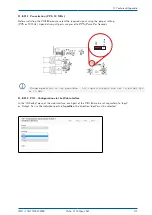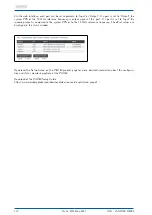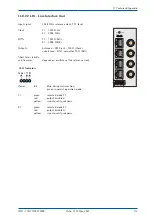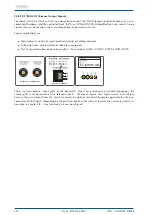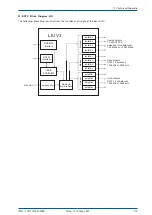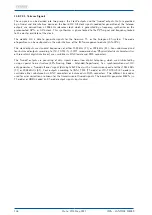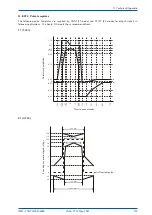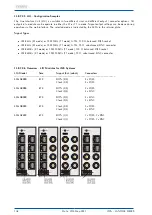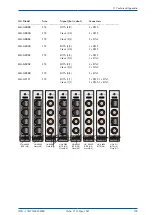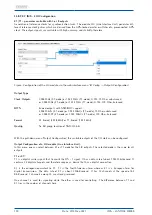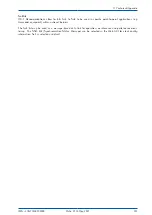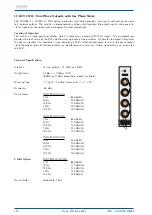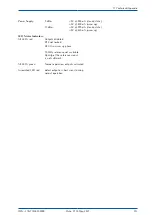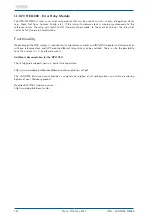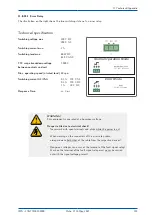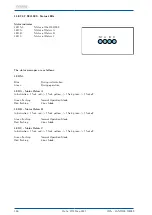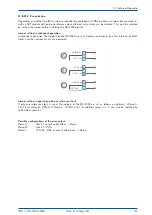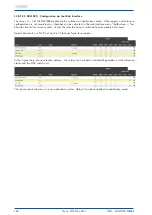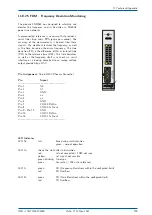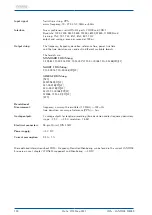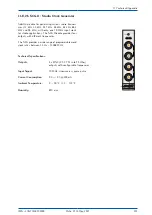
11.8.22.3 Telecom Signals
These signals can be devided into two groups: the "clock" outputs and the "framed" outputs, that are provided
by a framer and line interface device on the board LIU. All clock signals needed for generation of the ‘telecom
outputs’ are derived from a 2048 kHz reference clock, which is generated by a frequency synthesizer on the
preconnected GPS- or GLN-clock. This synthesizer is phase locked to the PPS signal and frequency locked
to the master oscillator of the clock.
The module LIU is able to generate signals for the American T1- or the European E1-system. The mode
of operation can be configured via the web interface of the IMS management module (LAN-CPU).
The clock outputs are standard frequencies of either 1544 kHz (T1) or 2048 kHz (E1). Four unbalanced and
four balanced outputs according to ITU-T G703-13 (CCITT recommendation "Physical/electrical characteristics
of hierarchical digital interfaces") are available via BNC female and RJ45 connectors.
The "framed" outputs are consisting of data signals known from digital telephony, which are distributed by
using a special frame structure (EFS Framing Mode - Extended Superframe). As a synchronization unit, LIU
only generates a "framed all ones" signal (data byte 0xFF hex) with a transmission speed of either 1544 kBits
(T1) or 2048 kBit/s (E1). Four outputs according to ANSI T.403 (T1-mode) or ITU-T G703-9 (E1-mode) are
available either unbalanced via BNC connectors or balanced via RJ45 connectors. Two different line codes
used for error correction are known for the transmission of framed signals. The board LIU generates B8ZS- (in
T1-mode) or HDB3-coded (in E1-mode) output signals by standard.
136
Date: 27th May 2021
IMS - LANTIME M4000

